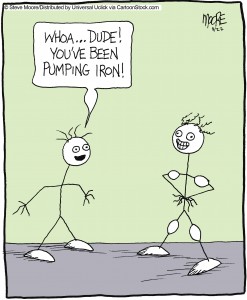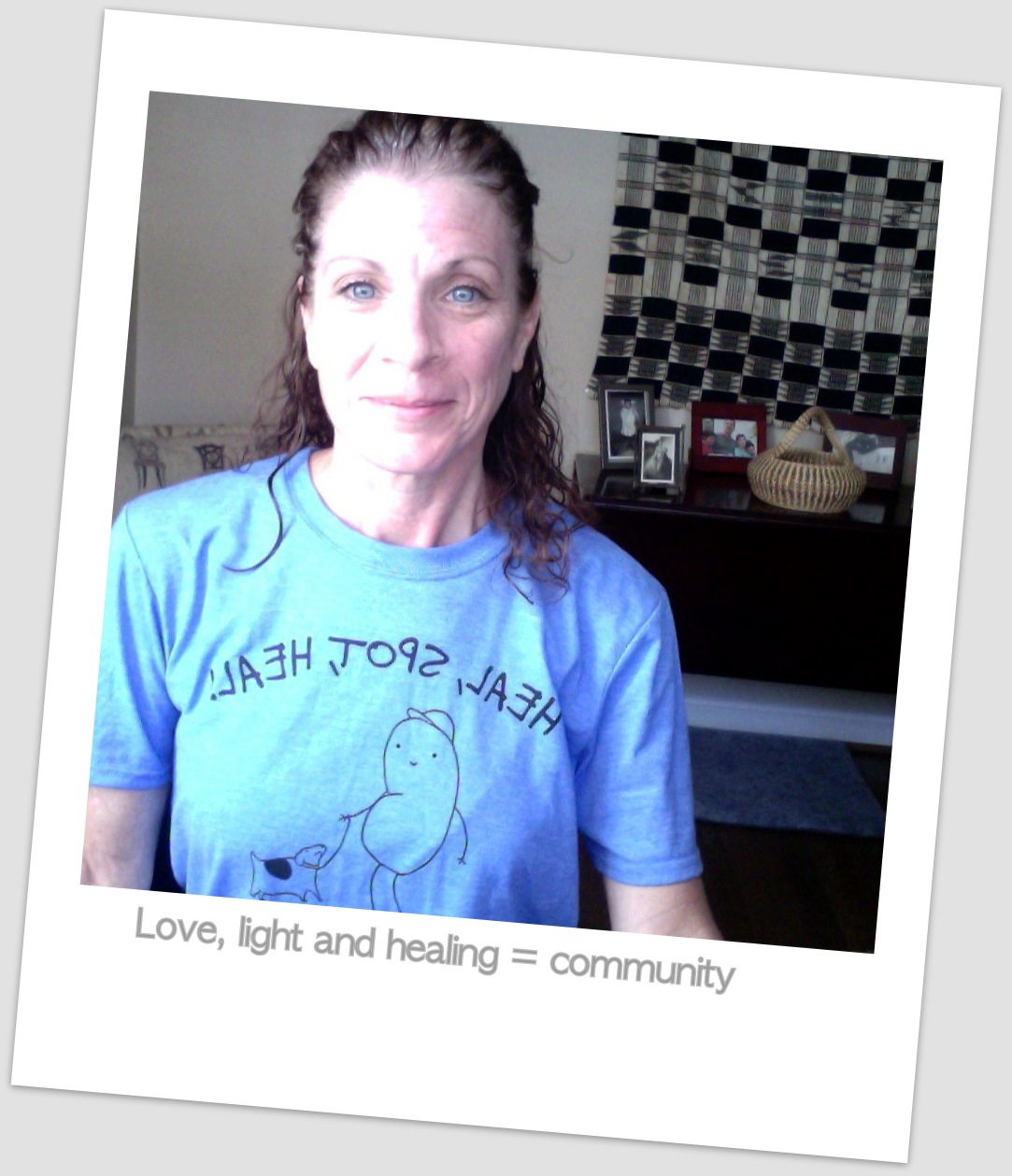You don’t need ripped; you just need to get it right
There are some days when growing older simply feels like a big old pain in the butt. Despite the wrinkles, grey hairs and even sags in places we didn’t know could sag, there are important steps you can take to keep some parts of the aging process at bay, such as a loss of muscle. And while many of us stay strapping until about the age of 40, after that time there is evidently a progressive decline in muscle, leading to eventual weakness, slowing of movement and even disability. Have you ever observed an elderly person trying to rise from a chair or climb the stairs? It’s tough to watch, right?
Fortunately, researchers say that there are a few steps that you can take to slow the process and protect what you have, even if you are past the age of 40. Mind you, the rate at which muscles age can vary widely between individuals and genetics do play a role. In fact, genetics may be responsible for more than half of muscle variance and this variance is evidently is driven by your mother’s genes; not only is her longevity predictive of how long you might live but it also affects muscle size and strength as you grow older.
Not surprisingly, hormones also play a role. Darn, that estrogen keeps rearing her ugly head! Indeed, it appears that not only do declines in estrogen impact skeletal muscle structure but also function, robbing women of the much needed ability to keep muscles tense when they need to be.
Still, researchers say that there are still opportunities to modify the trend.
- Nutrition is important. You’ve heard the caloric restriction can prolong life, right? But it’s not without risk and researchers say that lower food intake can lead to reduced nutrient intake, which actually boosts systemic inflammation, a culprit in muscle loss as well as a host of other illnesses. But supplementing with antioxidants, incorporating omega-3s into the diet and focusing on amino acid, leucine rich foods, such as cottage cheese, egg whites, low-fat beef, fish, chicken, lentils and soybeans (all of which provide ample protein) may hep to reduce inflammation, improve muscle function (namely the functioning of muscle fibers) and boost muscle size.
- Physical activity is key! Exercise actually reduces low-grade systemic inflammation that plagues our bodies as we age. And, it directly benefits skeletal muscle by helping to maintain the function of muscle fibers, attenuate the loss of muscle units and help reduce the loss of cells that are important for muscle regeneration. Regular exercise may also help the body to oxygenate muscles and tissues, another factor that declines with aging.
Listen up! Keeping muscles strong and healthy doesn’t mean that you need ripped. However, what it does mean is that you need to get it right. Exercise your brain on this one, make sure that you are getting proper nutrition and move your body. And start now; not when you are sitting in that chair struggling to get up.
Read More
Resilience, illness and community
 This week I called on your help. And you answered by sharing Wednesday’s Team Brilliant post, joining the community, sharing via Facebook and Twitter, donating and buying tee shirts. I am honoured and wowed. Which is why I want to this little gem with you: when you are ill, your resilience appears to highly related to social support, along with the ability to cope, finding benefit in your experience, however difficult, and perception.
This week I called on your help. And you answered by sharing Wednesday’s Team Brilliant post, joining the community, sharing via Facebook and Twitter, donating and buying tee shirts. I am honoured and wowed. Which is why I want to this little gem with you: when you are ill, your resilience appears to highly related to social support, along with the ability to cope, finding benefit in your experience, however difficult, and perception.
So, what is meant by ‘resilience?’
Across the literature and across different illnesses, resilience in the form of adversity refers to one’s capacity to successfully maintain or regain one’s mental health and attitude. It relates to hope, empowerment, acceptance of hardship and determination. Anticipating and envisioning a ‘healthy self’ in the future can help us see past current and immediate physical or illness hardships.
Social support from family and friends also plays an essential role. Social support has been associated with better psychological health, finding benefit in one’s situation, hardiness and self-esteem. Moreover, studies show that social support actually boosts success in living with an illness.
Over the past several weeks, we have seen that in action, as a community of people, many with only two people in common, joined together to help and support someone with a critical illness in need. When I asked that person how that effort impacted his outlook, he told me that he looked forward to the future when he could pay it forward.
Social support is powerful. According to a recent review in Psychosomatics Journal, “social support is clearly vital to most patients to enhance resilience.” The researchers say that factors that further enhance this support include active coping, positively assessing one’s situation, acceptance, and spirituality. Ultimately, these factors in concert can help many individuals with illness form a new framework, identify new and positive inner strength that they never realized they were capable of and even improve overall functioning.
Goethe once wrote “The world is so empty if one thinks only of mountains, rivers & cities; but to know someone who thinks & feels with us, & who, though distant, is close to us in spirit, this makes the earth for us an inhabited garden.”
Whose garden will you inhabit?
p.s. Julie Pippert. I have a tee shirt for you.
Read More
Wednesday Bubble: Team Brilliant
Team Brilliant.
Just like Flashfree, it’s all about community.
If you are curious why I am posting a photo of myself, stripped down, unadulterated wearing a tee that reads ‘Heal Spot, Heal,” I would like to share a story.
Years ago, I met the amazing author Patti Digh on Twitter. And then I met her in real life a few times. And spoke with her on the phone and asked her to guest post on Flashfree. You can find those posts here.
Patti has a lovely family, two beautiful daughters, a dog and a husband she calls “Mr. Brilliant.” Mr. Brilliant’s alter ego is John Ptak. And John and I became virtual friends through our love of science and vintage ads. You can find John’s blog here.
Patti and John have built a community that is global and far-reaching. And so, when John was diagnosed this summer with kidney cancer, that community went into action and formed Team Brilliant, the goal of which was to give back all that John and Patti have given. You see, John had recently gave up his health insurance policy.
John’s surgery went well. And Team Brilliant has raised over $98,000 (just a wee bit short of their $100,000 goal) to pay for his medical care. I am proud to be a member of Team Brilliant. And so, I wear the tee shirt (which, by the way, was designed by Patti and John’s daughter Emma) to demonstrate my support.
The tee shirt.
It’s a symbol of community, the gift that we can give by supporting each other through the good times and the bad. But it’s more than that. Because it demonstrates the power that each of us has within to make a difference. And how that power grows exponentially every time someone else joins in.
I purchased two shirts — the one I am wearing in the picture — and the one that I am going to send to one of you (Size L) All I ask is that you write a comment below about community and donate whatever you can to Team Brilliant; even $1 can make a diference.
We’ve got two days to make it to goal and the Team is short less than $2K. Want to help them get over the hump? All it takes is a few prayers, a dollar or two and a comment (including your contact info). Who knows? Maybe that comment will make all the difference to someone else who needs a little bit of help, and send a message that love, light and healing are mighty powerful forces.
Pretty brilliant? Community sure can be!
Read MoreFeeling wheezy? HRT may be that albatross around your neck…
Did you know that asthma affects an estimated 300 million people across the globe? That’s roughly one in 20 and it’s incidence is expected to rise over the next few years, especially in urban areas. However, did you also realize that researchers believe that there may be a connection between reproductive status, reproductive hormones and the development of asthma? In fact, while early on, asthma occurs in greater rates among boys than girls, this flips in puberty and by the time early adulthood hits, twice as many women as men suffer from asthma. As women start to age, however, the role of hormones is less clear, with some research showing that asthma rates decline through natural menopause, early or surgical menopause may be associated with greater risk.
Despite an extensive review of available studies, the evidence for the link between asthma and menopause remains limited, except among women who experienced early menopause and started using hormonal therapy. Take note that while this increased risk was minimal, it is in direct conflict with reports that claim that hormone therapy actually protects against asthma! Indeed, it is believed that low levels of estrogen may act to protect against the development of asthma while abnormally high levels, such as those created by exogenous hormones, can increase it. And it’s not the first time that I’ve come across this link (check out these earlier posts!). Additionally, it may be possible that women who go through early menopause may have hormonal imbalances that are linked to respiratory issues and illness.
Still, the association is unclear and it’s likely to factors other than gender and hormones also play a role in asthma, such as genetics and metabolism. In the meantime? Be mindful that replacing estrogen may not be the most natural pathway and perhaps, its decline, despite being associated with a myriad of troublesome symptoms like flashes, sweats and swings, is also protective.
If you are feeling wheezy and don’t take hormones, it’s probably not the ‘pause. If you are on hormone replacement and notice changes in your breathing, take pause and get yourself in to see a practitioner.
Read More
Battle of the midlife bulge: diet+gender=
I am on a roll! On a roll around my midsection, that is.
Ever wonder why women may be likelier than men to gain fat in their abdominal area, especially as they go through menopause? Yup, we’ve talked lots on Flashfree about estrogen, exercise and even stress and the release of cortisol and how they affect that growing tummy donut. However, researchers are now adding another factor into the mix that may occur especially in women: a high-fat diet. Mind you, this particular study, which is published online in Diabetes journal, was conducted in mice so it’s way too early to comment on how the findings affect actual humans. But what it does imply is that diet might not be the only factor at play and in women, genetics and gender play an equally important role.
Researchers say that when female mice were fed a high fat diet, it triggered the production of an enzyme (called aldehyde dehydrogenase 1) that produce a hormone — retinoic acid — that boosts the formation of fat around the abdomen. Let’s step back; high fat diet leads to enzyme, leads to retinoic acid leads to belly fat. Got it?
Interestingly, not only is this enzyme activated at nine times the level in female versus male mice, but when removed, this domino effect disappears. What’s more? Estrogen can suppress the enzyme so when it starts to decline, women become more prone to developing that midsection bulge.
The culprit here is vitamin A and how the female body processes it. One of the functions of vitamin A is to produce a molecule that supports how the body burns both fat for energy and retinoic acid. Evidently, high fat diets can directly shut down the fat burning molecule and the domino effect begins, resulting in the midlife bulge many of us have come to know so well.
The good news is that on a regular diet, female mice barely produced retinoic acid, meaning the simple solution for women may be to stay away from high fat meals as much as possible.
If you can’t burn it, and you can’t rely on estrogen to keep the fire going (or take it away -ironic, right?!), then take some steps and do it yourself. D is for diet. F is for female. The endgoal? Do the math.
Read More









